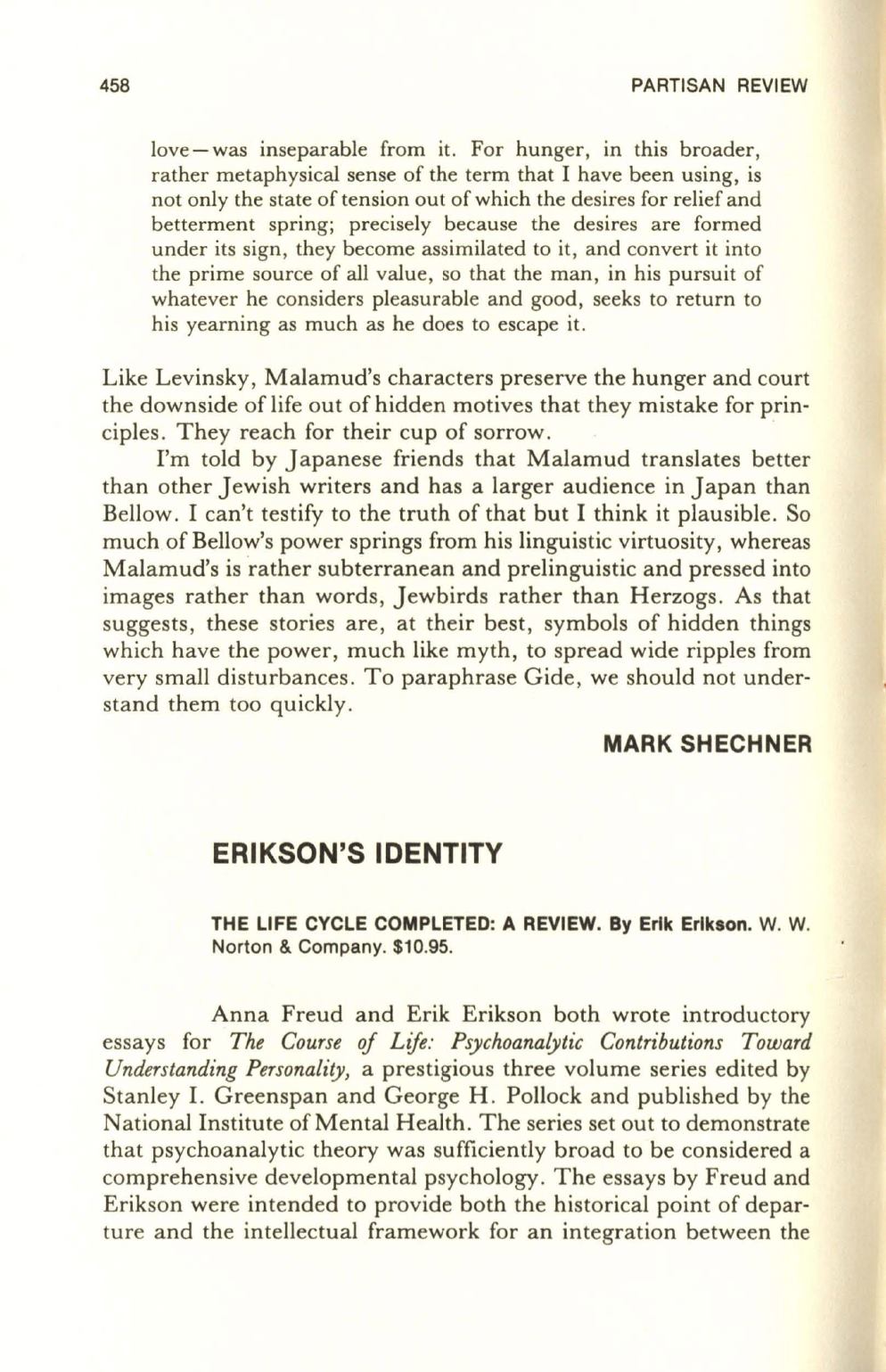
458
PARTISAN REVIEW
love-was inseparable from it. For hunger, in this broader,
rather metaphysical sense of the term that I have been using, is
not only the state of tension out of which the desires for relief and
betterment spring; precisely because the desires are formed
under its sign, they become assimilated to it, and convert it into
the prime source of all value, so that the man, in his pursuit of
whatever he considers pleasurable and good, seeks to return to
his yearning as much as he does to escape it.
Like Levinsky, Malamud's characters preserve the hunger and court
the downside of life out of hidden motives that they mistake for prin–
ciples . They reach for their cup of sorrow.
I'm told by Japanese friends that Malamud translates better
than other Jewish writers and has a larger audience in Japan than
Bellow. I can't testify to the truth of that but I think it plausible . So
much of Bellow's power springs from his linguistic virtuosity, whereas
Malamud's is rather subterranean and prelinguistic and pressed into
images rather than words, Jewbirds rather than Herzogs. As that
suggests, these stories are, at their best, symbols of hidden things
which have the power, much like myth, to spread wide ripples from
very small disturbances. To paraphrase Gide, we should not under–
stand them too quickly .
MARK SHECHNER
ERIKSON'S IDENTITY
THE LIFE CYCLE COMPLETED: A REVIEW.
By
Erik Erikson.
W. W.
Norton
&
Company. $10.95.
Anna Freud and Erik Erikson both wrote introductory
essays for
The Course
oj
Life: Psychoanalytic Contributions Toward
Understanding Personality,
a prestigious three volume series edited by
Stanley
I.
Greenspan and George H. Pollock and published by the
National Institute of Mental Health. The series set out to demonstrate
that psychoanalytic theory was sufficiently broad to be considered a
comprehensive developmental psychology. The essays by Freud and
Erikson were intended to provide both the historical point of depar–
ture and the intellectual framework for an integration between the


